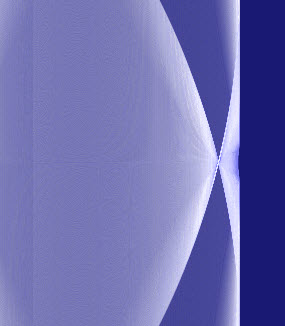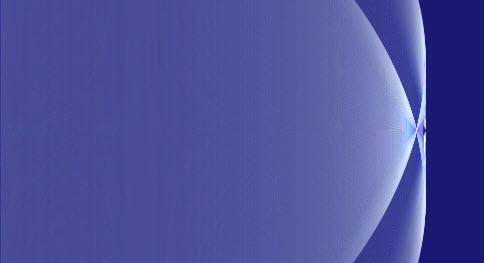This is the second in a series profiling the solutions to common central force fields from physics. Check out the the first one on the Newtonian gravitational force field.
These are even more plain than the gravitational well. That’s because these are for the harmonic potential. One of the things that distinguishes this potential is that all orbits are bound and elliptical in shape.
Contrasting that with the gravitational potential, there are 3 orbit shapes for that force: elliptical, parabolic, and hyperbolic. You can see the effects in the image. There is a relatively dark area bounded by the parabolic orbit, with a diffuse bright spot near the tip of the parabola. This is due to the tightly curved hyperbolic orbits nearby. The bright spot fades out into a dim patch further out as the trajectories become straighter the further they are from the center of the field.
Both of these fields have infinities which means that they valid only as approximations to actual forces. The harmonic field has the most severe, it extends out to infinity and no particle can escape from it’s pull. It doesn’t matter how fast our test particles are moving, they will never escape the grasp of the central pull.
Newtonian gravity has the opposite problem. The force becomes infinitely strong as you approach the central point. This causes problems for the differential equation solver and leads to the lower two images with kinked up trajectories and the rays radiating from the central point.
In our next installment I’ll be showing a field without those infinities and see how it stacks up.

